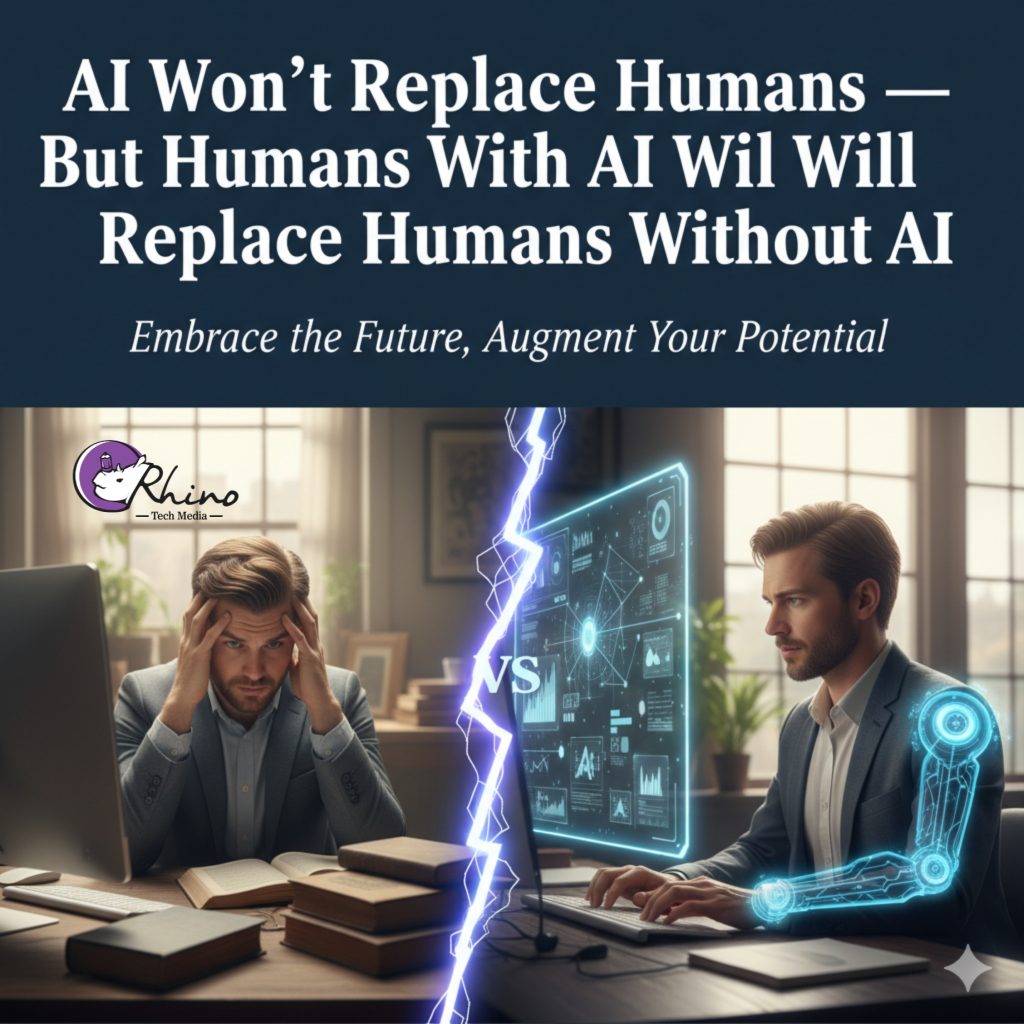Introduction
The rapid rise of artificial intelligence (AI) has triggered intense debate about the future of human labor and creativity. While some fear that AI will lead to widespread job loss and dehumanization of work, others see it as a powerful tool that can enhance human potential. The phrase “AI won’t replace humans — but humans with AI will replace humans without AI” captures the essence of this transformation. It highlights that AI itself is not the threat; rather, the real challenge lies in whether individuals and organizations choose to embrace or ignore this new paradigm.
The Evolution of AI as an Augmentation Tool
AI should not be viewed merely as automation that replaces human effort, but as augmentation that amplifies it. Historically, every major technological leap — from the printing press to the internet — has expanded what humans could achieve. AI continues this trend by enhancing cognition, creativity, and efficiency.
For example, in fields like medicine, AI helps doctors analyze scans faster and more accurately. In law, it assists lawyers with research and contract review. In art and design, it can generate ideas that inspire human creators. In all these cases, the human remains the decision-maker, the empath, and the storyteller — but AI becomes the catalyst for greater precision and speed.
The Divide Between AI Adopters and Resisters
The real disruption, therefore, is not between humans and machines, but between humans who adapt and humans who resist. Those who integrate AI into their workflow gain leverage — the ability to produce more value with less effort. For instance, a marketer using AI-driven analytics and content generation can outperform one relying solely on manual processes. Similarly, an engineer who codes with AI assistance becomes exponentially more productive.
In contrast, those who dismiss AI out of fear or skepticism risk becoming obsolete in a world that increasingly rewards adaptability. This mirrors the shift that occurred during the early days of the internet: businesses that refused to go digital fell behind, while those that embraced e-commerce thrived.
Ethical and Human Considerations
However, adopting AI is not just about efficiency — it’s about responsibility. Humans with AI hold more power than ever, and with that comes ethical accountability. Misuse of AI can lead to misinformation, bias, and exploitation. Therefore, the future belongs not just to those who use AI, but to those who use it wisely.
The human advantage lies in qualities AI cannot replicate: empathy, moral reasoning, intuition, and the ability to connect meaningfully with others. These traits will define the most valuable professionals and leaders in the AI era — not the technical mastery alone, but the ethical and emotional intelligence to guide it.
Preparing for the Hybrid Future
To stay relevant, individuals must cultivate a “human-AI symbiosis” mindset. This means:
- Continuous Learning: Staying informed about new AI tools and understanding their applications in one’s field.
- Critical Thinking: Using AI as a thought partner, not a crutch, by questioning outputs and refining ideas.
- Creativity and Empathy: Doubling down on the uniquely human capacities that AI cannot replicate.
- Collaboration: Building multidisciplinary teams where AI augments collective intelligence rather than replaces individuals.
Organizations, too, must foster environments that encourage experimentation with AI while maintaining human oversight and transparency.
Conclusion
AI is not a rival but a revolution — one that redefines what it means to be capable, creative, and competitive. The question is no longer whether AI will take our jobs, but whether we are willing to evolve alongside it. In this emerging landscape, AI will not replace humans — but humans with AI will replace humans without AI.
Those who merge their human insight with technological intelligence will not only remain relevant — they will lead the next wave of progress.

